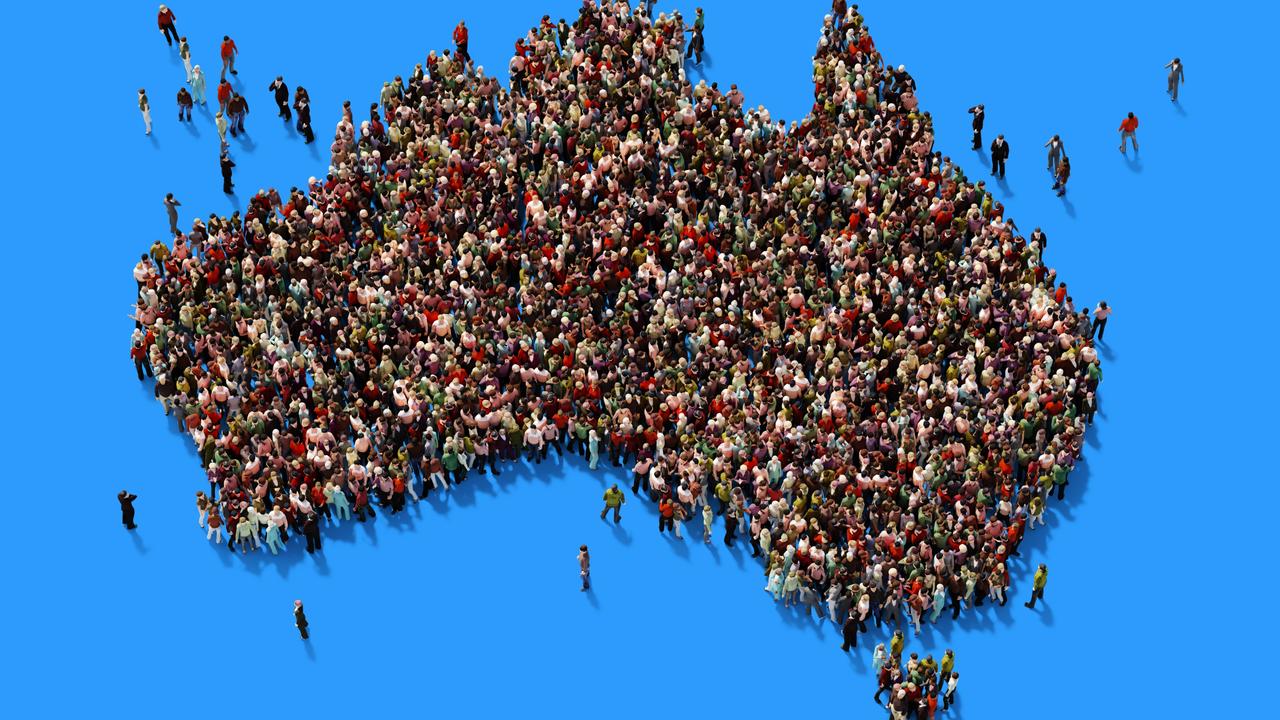Population growth could prevent a recession but raise interest rates
Australia gained a record new 497,756 mouths to feed in 2022 as immigration surged, but how does it impact the economy?

National
Don't miss out on the headlines from National. Followed categories will be added to My News.
A surging population is expected to help Australia avoid a recession despite interest rate rises, shrinking retail sales and plunging consumer confidence.
The extra half a million people who called Australia home in 2022 will underpin economic growth and ease some of the tight jobs market, but economists worry they may also help push up inflation and interest rates further through their increased demand for goods and services.
Investments should benefit, especially property prices as the housing supply-demand equation tightens further, they say.
BetaShares chief economist David Bassanese said population growth supported positive GDP growth as more people were producing and consuming.
“The aggregate level of economic activity rises with the number of people in the economy,” he said.
The sheer weight of numbers could offset the negative impact of Australians spending less as interest rates bite.
“Consumers are being more cautious and/or losing their jobs, so spending per person may fall.”
This would produce a per-capita recession, he said.
Per capita GDP fell 0.2 per cent in the March quarter, while Australia’s population grew 0.4 per cent, Mr Bassanese said.

But a traditional recession – two quarters of negative GPD growth – still seemed unlikely, he said.
Australian Bureau of Statistics figures show the nation’s population jumped by 497,756 to 26.27 million people during 2022, as migration returned with a bang following Covid lockdowns.
The 1.93 per cent population growth rate was the highest since 2008, and the Albanese government has strong population targets for the coming years despite concerns by many about how all the new people are going to be housed.
Mr Bassanese said a growing population increased labour supply, filled gaps in workforce and was generally positive for investments. “A growing population is good – it adds to housing demand and it’s good for property prices. It adds to corporate earnings and is good for the sharemarket,” he said.
“High immigration lifts all boats and adds to demand across many sectors.
“But if the net impact of immigration is inflationary it means the RBA is more likely to want to clamp down on it.
“If they pause you might get sentiment bouncing back. In a way you have to keep the foot on the throat of the economy, so to speak.”
Mr Bassanese said the RBA’s rate rise pause in April sent house prices climbing again.
KPMG chief economist Brendan Rynne said surging population “makes the RBA’s job harder”.
“The RBA is trying to slow down aggregate demand,” he said.
“In normal population growth it is relying on increases in interest rates to slow down spending in the average household.”
The current population increase made it difficult for rates to impact total spending, Dr Rynne said.
“More people are coming into the economy and they have to set up a new household – that’s driving demand … some of them are coming with big chequebooks.”
Few of those new households were immediately taking out mortgages, so they were less likely to feel rate-rise impacts, he said.

Dr Rynne said this extra demand would help shield Australia’s economy from a recession, but it could be tipped into one by a relatively minor shock such as a weather event.
“We will probably skate around a traditional recession because of the population growth,” he said.
“We are not seeing GDP growth keep pace with population growth, so we are getting a per capita recession, which is why individuals are feeling pretty average.
“Whether we are in a technical recession or not doesn’t matter – for the average mum and dad in the street, they’re going to feel like they are in one.”
CommSec chief economist Craig James said this week’s better-than-expected jobs data, with unemployment falling to 3.6 per cent and employment participation hitting a record high 66.9 per cent, was a “multi-edged sword” and was impacted by the rising population.
“More people in jobs means more spending – especially on the staples,” he said.
“But more jobs creates the risk of strong spending outpacing supply of goods and services, leading to higher prices – and higher interest rates.
“The lift in jobs has partly been achieved via increased immigration. This means more homes are built and there is upward pressure on home prices and rents.
“The potential for higher interest rates drives the Aussie dollar up, restraining demand for exports but higher demand for imported goods. In short, there are implications for investors across a range of sectors.”
Westpac has reduced its economic growth forecasts to reflect a higher RBA cash rate, which it expects to reach 4.6 per cent.
“Westpac has now lowered its growth forecasts to 0.6 per cent in 2023 and 1 per cent in 2024,” chief economist Bill Evans said.
“The key driver of this insipid growth outlook is household consumption which we now expect to grow by just 0.3 per cent in 2023 and 0.6 per cent in 2024,” he said.
More Coverage
Originally published as Population growth could prevent a recession but raise interest rates









